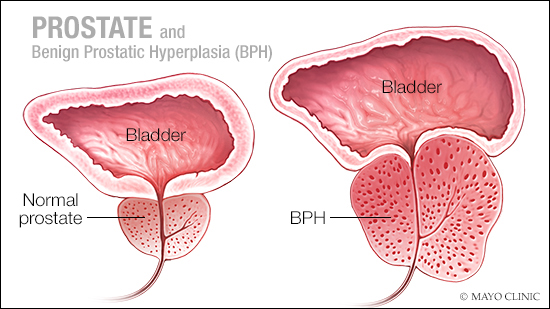-
Treatment options for enlarged prostate

For men over 50, prostate problems are common. The prostate gland is located just below the bladder and surrounds the top portion of the urethra, which is the tube that drains urine from the bladder. The prostate's primary function is to produce the fluid that nourishes and transports sperm.
As men age, the prostate gland tends to grow larger. Benign prostatic hyperplasia, also called prostate gland enlargement, can cause uncomfortable urinary symptoms, such as blocking the flow of urine out of the bladder, or bladder, urinary tract or kidney problems. Fortunately, a wide variety of treatments are available for enlarged prostate, including medication, minimally invasive therapies and surgery.
On the next Mayo Clinic Radio program, Dr. Mitchell Humphreys, a Mayo Clinic urologist, will highlight prostate health and treatment options for benign prostatic hyperplasia. Also on the program, Dr. Francisco Lopez-Jimenez, a Mayo Clinic cardiologist, will discuss sex after a heart attack. And Dr. Bruce Levy, a Mayo Clinic orthopedic surgeon, will share how his patients' experiences with lack of privacy during surgery led him and his wife to found a new company, COVR Medical.
To hear the program, find an affiliate in your area.
Use the hashtag #MayoClinicRadio, and tweet your questions.
Mayo Clinic Radio is on iHeartRadio.
Access archived shows or subscribe to the podcast.
Mayo Clinic Radio produces a weekly one-hour radio program highlighting health and medical information from Mayo Clinic.







